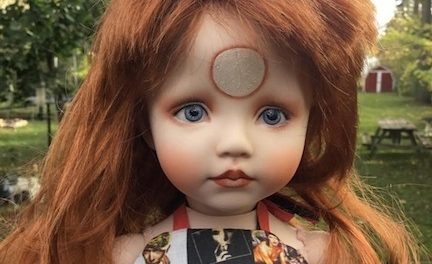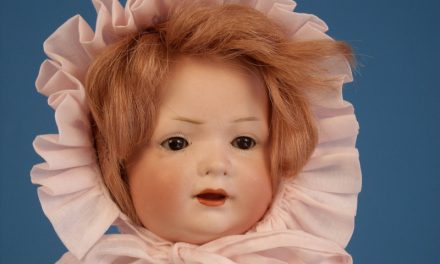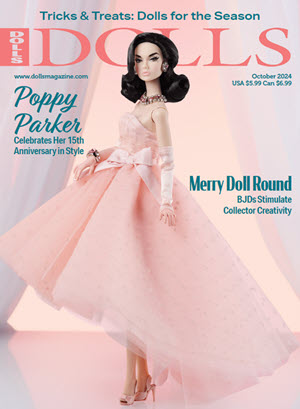By Judith Izen
Holiday shopping was exciting for both buyers and sellers of dolls in 1958. Manufacturers were producing a variety of wonderful dolls that catered to the needs and wants of children growing up during the baby boomer era. Although quality hard-plastic dolls were still being manufactured at this time, 1958 was a year when many were a hybrid of hard-plastic bodies and vinyl heads. This was also the year prior to Barbie hitting the shelves and changing the doll market forever.
How was a child or parent supposed to choose when buying presents for the holidays or birthdays? A range of options were available, including sweet baby dolls, girl dolls, boy dolls, teen dolls, and celebrity dolls. Popular categories were 8-inch girl dolls and 10.5-inch teen fashion dolls. Many of these were offered with high-quality clothing that could be purchased separately through mail-order catalogs, as well as toy and department stores.
Television ads helped stimulate the market for specific dolls. Major companies such as Ideal and American Character advertised during shows such as Ding Dong School and The Shari Lewis Show, which were programs aimed at younger viewers.

The major doll manufacturers in 1958 were Arranbee, American Character, Cosmopolitan, Eegee, Effanbee, Horsman, Ideal, Madame Alexander, Nancy Ann, Uneeda, and Vogue.

8-Inch Girl Dolls
Some of the most popular 8-inch dolls available in 1958 were Vogue’s Ginny, Cosmopolitan’s Ginger, Madame Alexander’s Wendy, American Character’s Betsy McCall, and Nancy Ann’s Muffy. The original Ginny doll by Vogue had been sold for several years, but each year, her dress designer Virginia Graves would come up with a completely different wardrobe for her. Of course, children wanted their dolls to have the latest fashions.
A number of companies hopped on the 8-inch-doll bandwagon and produced their own little girl dolls to compete with Ginny. Lesser-known names of Ginny’s competitors include Virga’s Playmate, Effanbee’s Fluffy, Nancy Ann Storybook’s Lori Ann, and Plastic Molded Arts’ Joanie. They were sold at a lower price than Ginny.
10.5-Inch Fashion Dolls
Ideal’s Little Miss Revlon, American Character’s Toni, Madame Alexander’s Cissette, Arranbee’s Coty Girl, and Vogue’s Jill were popular 10.5-inch fashion dolls available for purchase that year. Both Ideal’s Little Miss Revlon and American Character’s Toni appeared in catalogs for the first time in 1958. They were competing with Madame Alexander’s Cissette, Nancy Ann’s Miss Nancy Ann, and Vogue’s Jill, who had all been introduced the year before and were experiencing great success. The fashion dolls had beautiful outfits that could be purchased separately. There was usually a bridal and a ballet outfit available for each doll.



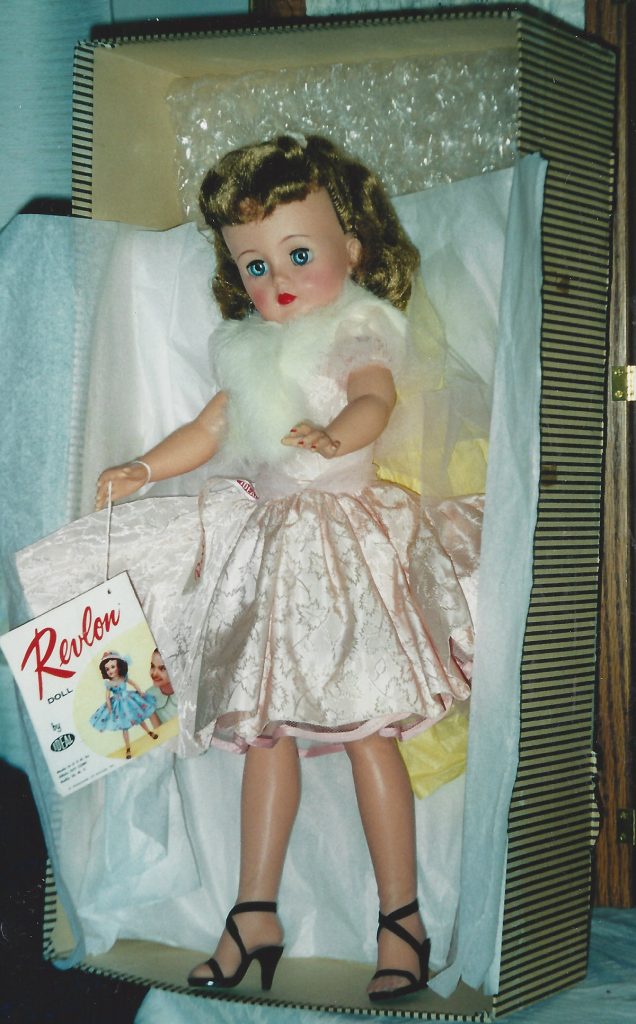
Large Fashion Dolls
Ranging in size from 15 inches to 23 inches, large fashion dolls included American Character’s Sweet Sue With a Flexible Foot and Sweet Sue Sophisticate, Madame Alexander’s Cissy, and Ideal’s Miss Revlon. The large fashion dolls also had optional outfits to purchase, but their wardrobes were not as extensive as those of the 10.5-inch fashion dolls.
Baby Dolls
Baby dolls included Vogue’s 8-inch Ginnette and her brother Jimmy, American Character’s Toodles, Arranbee’s Angel Face, and Ideal’s Baby Coos. There were generic baby dolls of various sizes on the market, as well.
Celebrity Dolls
Ideal’s Shirley Temple was the favorite in the celebrity category. The 1958 vinyl version of child star Shirley Temple came in four sizes ranging from 12 inches to 19 inches. As with the 1930s composition version, the doll was accompanied by outfits that were to be purchased separately, including some from Temple’s popular movies.
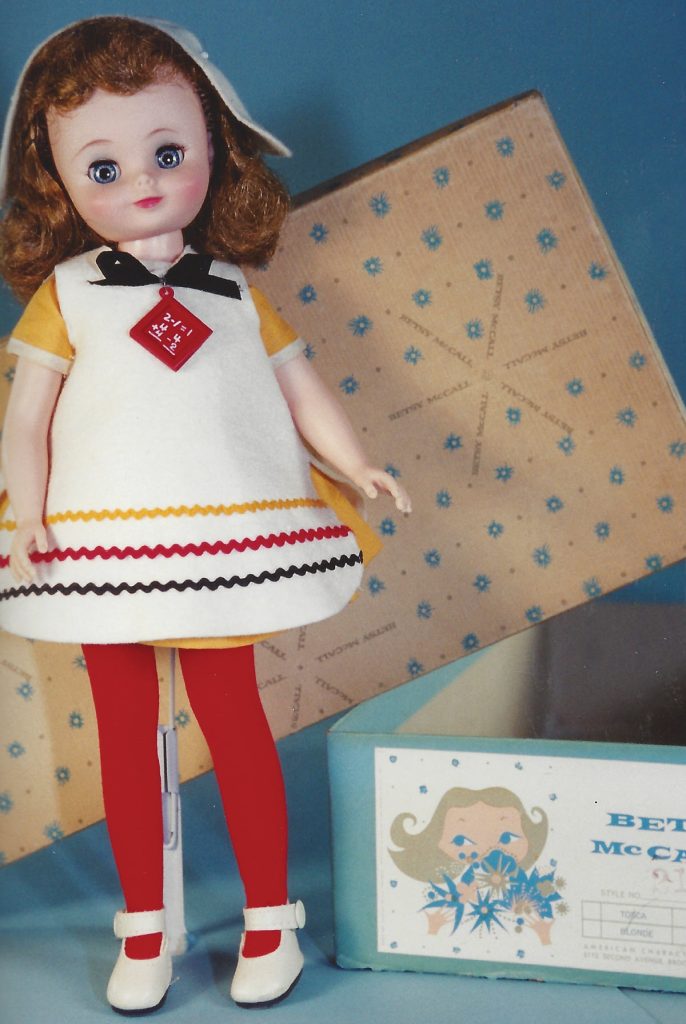
Large Girl Dolls
At this time, there were not many large girl dolls — that is, dolls taller than 14 inches. Two exceptions were American Character’s 14-inch Betsy McCall and a unique doll by Madame Alexander named Marybel: The Doll That Gets Well. Marybel was all vinyl and came in four sizes ranging from 12 inches to 22 inches. Her unique accessories included plastic crutches, two plastic arm and leg casts, gauze bandages, tape, red measles spots, and yellow chickenpox. She is usually marked “Mme. Alexander 1958.”


Moving Forward With Production
How was it decided which dolls would be made? In February each year, before the dolls were produced, manufacturers presented their new lines at the Toy Fair at the Javits Convention Center in New York. Buyers from catalog companies, department stores, and toy stores could see the prototypes of dolls being offered. Based on the orders and feedback from buyers, the manufacturers would decide which dolls to make. Influential buyers (mostly men at that point in time) would give input regarding specific changes they wanted for dolls appearing in their catalogs (Mays, Sears, and Montgomery Ward) or department stores (Macy’s or Marshall Field’s). Typically, the modifications would be something along the lines of “make the dress in red” or “produce a brunette doll with green eyes.”
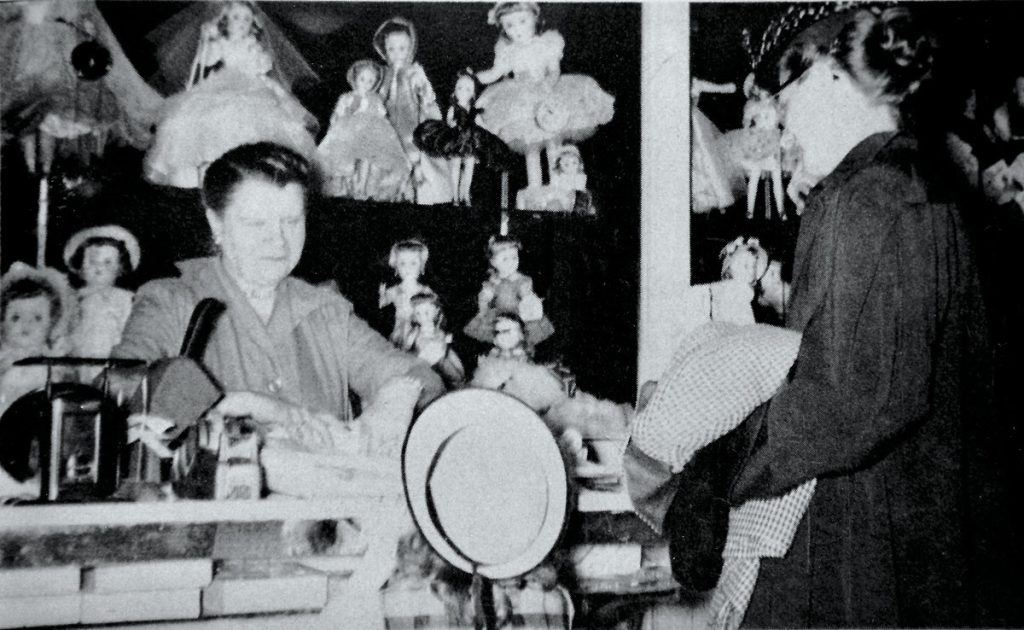
Sometimes, the large catalogs would order a doll as a special that was only available through their holiday catalog. To make the dolls cheaper, they would add specifications such as “make the dress with less detail” or “less trimming” or “lower-quality fabric.” The manufacturers would then know how many dolls were ordered and thereby buy fabric and doll parts. They would hire temporary factory workers, as needed, to complete the orders for the holiday buying season.
During the peak preholiday season, many toy companies ran their factories for 24 hours straight to keep up with the demand. At one point, 1,000 employees worked at the Ideal Toy Company plant in New York during the fall dollmaking season.
Countless dolls produced in 1958 endure today, and collectors still enjoy their high-quality craftsmanship and play value. When it comes to purchasing these vintage beauties, deciding which one to buy is as difficult now as it was back then. It would certainly be a treat to find these dolls wrapped in their boxes as presents.
Judith Izen is the author, along with Carol Stover, of the Collector’s Encyclopedia of Vogue Dolls: Identification and Values. You may contact Izen at jizenres@gmail.com.

